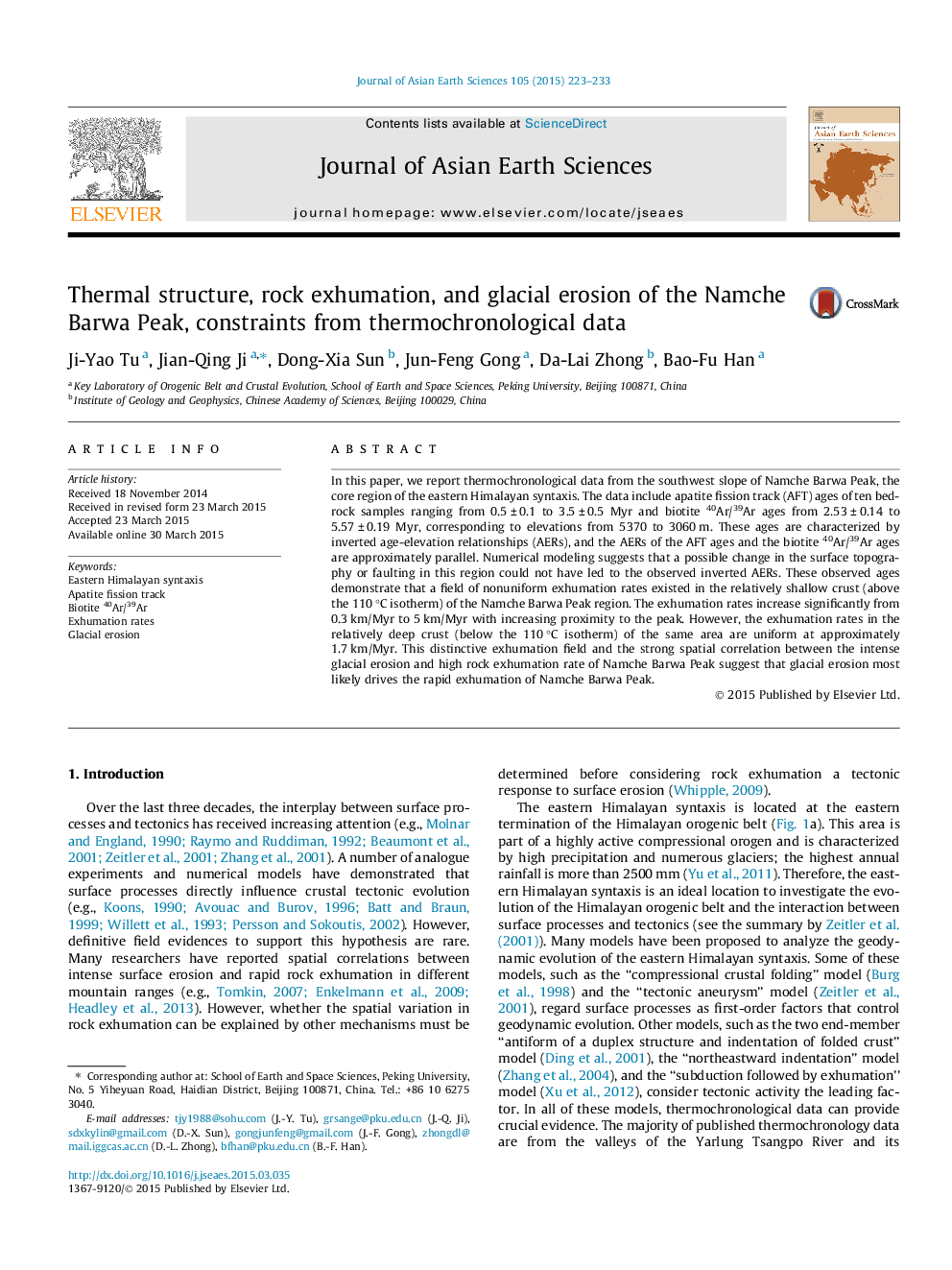| Article ID | Journal | Published Year | Pages | File Type |
|---|---|---|---|---|
| 4730495 | Journal of Asian Earth Sciences | 2015 | 11 Pages |
•Exceptional inverted age-elevation relationships in the Namche Barwa Peak.•Thermal kinematic model analyze using “PECUBE”.•Evidence supporting rapid rock exhumation probably driven by glacial erosion.
In this paper, we report thermochronological data from the southwest slope of Namche Barwa Peak, the core region of the eastern Himalayan syntaxis. The data include apatite fission track (AFT) ages of ten bedrock samples ranging from 0.5 ± 0.1 to 3.5 ± 0.5 Myr and biotite 40Ar/39Ar ages from 2.53 ± 0.14 to 5.57 ± 0.19 Myr, corresponding to elevations from 5370 to 3060 m. These ages are characterized by inverted age-elevation relationships (AERs), and the AERs of the AFT ages and the biotite 40Ar/39Ar ages are approximately parallel. Numerical modeling suggests that a possible change in the surface topography or faulting in this region could not have led to the observed inverted AERs. These observed ages demonstrate that a field of nonuniform exhumation rates existed in the relatively shallow crust (above the 110 °C isotherm) of the Namche Barwa Peak region. The exhumation rates increase significantly from 0.3 km/Myr to 5 km/Myr with increasing proximity to the peak. However, the exhumation rates in the relatively deep crust (below the 110 °C isotherm) of the same area are uniform at approximately 1.7 km/Myr. This distinctive exhumation field and the strong spatial correlation between the intense glacial erosion and high rock exhumation rate of Namche Barwa Peak suggest that glacial erosion most likely drives the rapid exhumation of Namche Barwa Peak.
